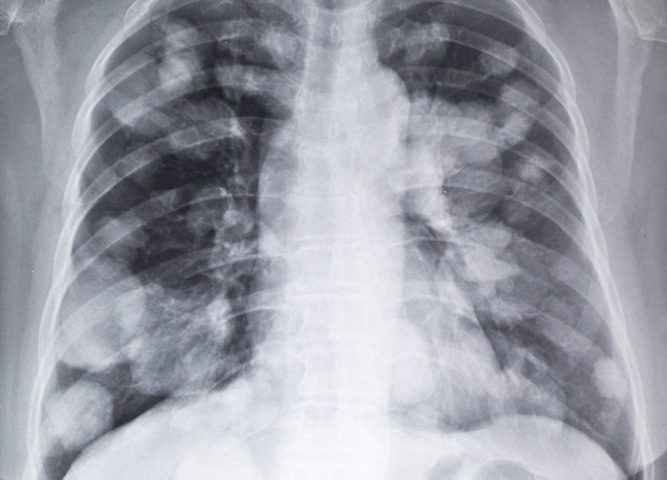Data from a Phase 2 clincial trial for solithromycin, a next-generation oral and intravenous fluoroketolide for the treatment of moderate to moderately-severe community acquired bacterial pneumonia (CABP) and urethritis, has reveled up to 85% cure rate.
Cempra, a pharmacuetical company dedicated to developing antibiotics, is developing solithromycin in a joint effort with Toyama Chemical for the Japanese market.
Toyama conducted the multi-center Phase 2, randomized and double-blind clinical trial to investigate the safety, efficacy and pharmacokinetics of solithromycin in Japanese patients with a diagnosis of mild to moderate CABP. Patients were treated either with solithromycin or levofloxacin for five days.
Patients who received solithromycin were treated with a 800 mg on day one, either as a sole dose (QD group), or as a split dose (BID group). Patients were then treated with a 400 mg daily for the rest of the trial. Patients randomly assigned to receive levofloxacin received a 500 mg dose once per day for the entire five-day trial period.
The Japanese clinical trial was identical in design to the Phase 3 trials conducted by Cempra in patients with CABP, as directed by the European Medicines Agency (EMA) and the United States Food and Drug Administration (FDA).
For the efficacy analysis, among the 154 patients enrolled in the trial 135 were treated with at least one dose of solithromycin and were confirmed to have CABP by an independent specialist physician evaluation (the modified ITT population). In the modified ITT population the ‘test of cure’ visit conducted after five to 10 days of treatment completion, demonstrated that the treatment was successful for 77.3%; 72.7%; and 61.7% of the patients in the solithromycin QD and BID, and levofloxacin treatment arms, respectively.
In the pre-specified population, per-protocol which included patients that met key trial inclusion and exclusion criteria, the success at the “test of cure” visit was 85.0% in the solithromycin QD treatment arm, versus 77.5% in the solithromycin BID treatment arm, and 67.4% in the levofloxacin treatment arm.
The analysis of the overall safety and tolerability showed that adverse reactions were identical between study groups; including hepatic adverse events such as an increase in alanine aminotransferase (ALT).
“I could not be happier to receive the results of this important study completed by our strong partner in Japan; the safety and efficacy outcomes further validate global Phase 3 trial data demonstrating the potential for solithromycin in the treatment of this serious infection,” said Prabhavathi Fernandes, president and chief executive officer of Cempra in a recent press release. “The need for a new treatment for CABP in Japan is great as multidrug resistance to common CABP pathogens such as Mycoplasma and Haemophilus continues to rise, with pneumococcal resistance to older macrolides reaching 88% in Japan. Solithromycin has once again demonstrated robust activity in comparison to a potent fluoroquinolone, levofloxacin, one of the most widely prescribed agents to treat CABP.”

